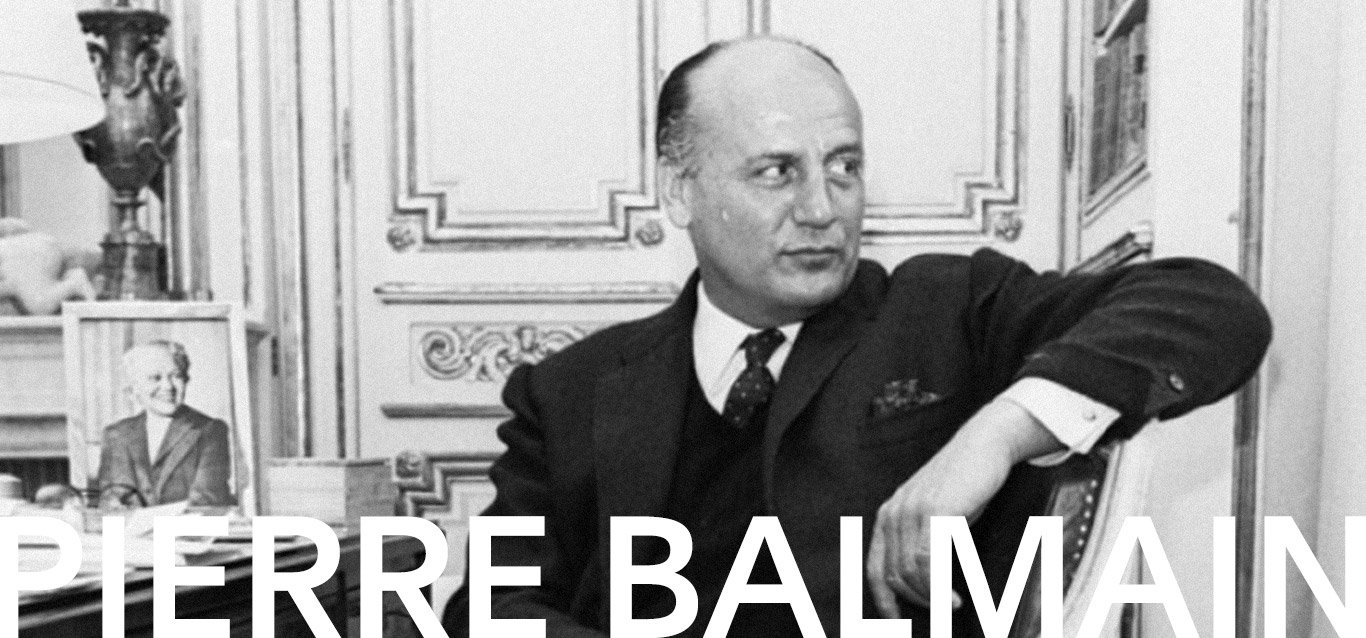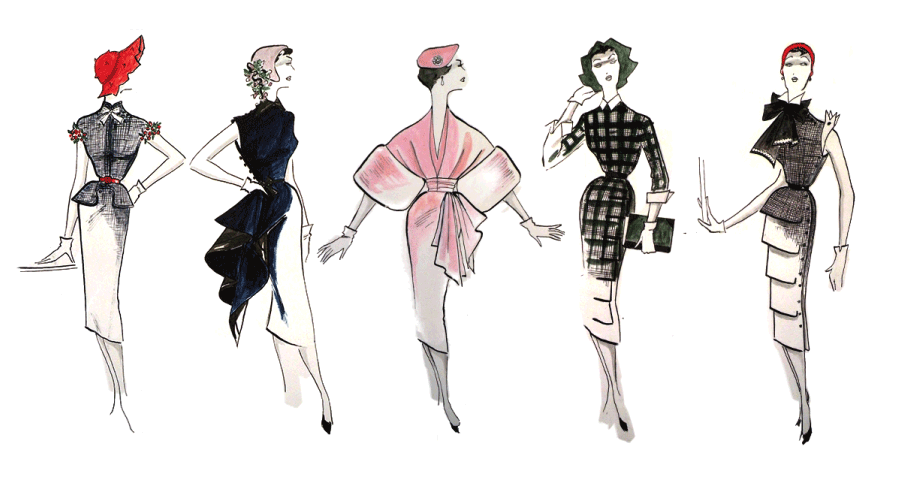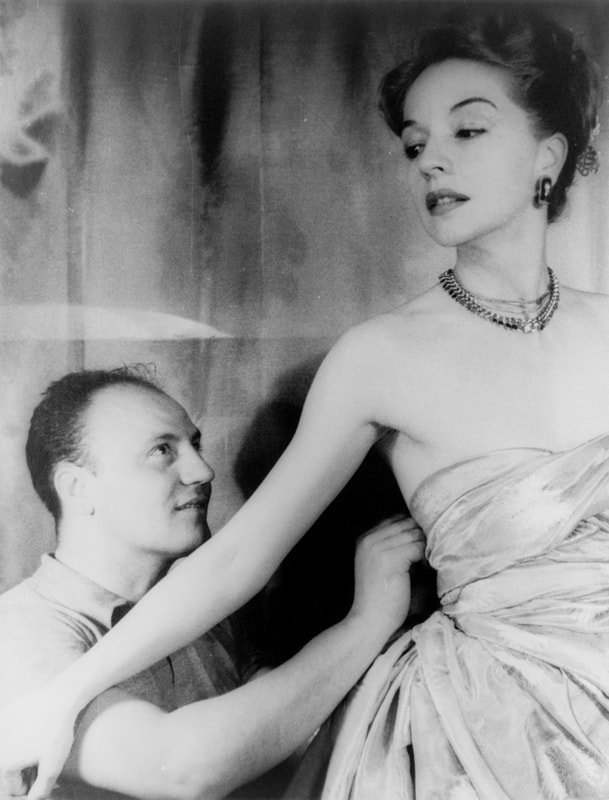Designer Deep Dive: Balmain
A couple of months ago I did a poll on my Instagram stories and heard from you guys that you were most interested in learning more about Givenchy and Balmain for the next installments of my Designer Deep Dive series. Last month my post was all about Givenchy and I’m excited to share my latest post about Balmain! I honestly didn’t know much about this brand until doing my research, and truthfully, Balmain hasn’t been on my radar as a designer that comes to mind when I think about luxury fashion. My top 5 usually consist of fashion powerhouses like Fendi, Chanel, Chloé, Oscar de la Renta, and Valentino. But after learning more about Pierre Balmain and the legacy he built within the world of couture fashion, I’ve become more intrigued with Balmain’s past and more importantly, how Olivier Rousteing has catapulted the brand into the trend-driven, digital world of fashion we’re in today.
EARLY LIFE
Pierre Alexandre Claudius Balmain was born in a small alpine village in the Savoie region of France in May of 1914. His mom worked in a dress shop that was run by his two aunts and owned by his father, Maurice Balmain. Pierre Balmain spent a lot of time at the shop with his family as a young child making and dressing paper dolls; this was his first introduction into the world of fashion and one that would help shape the course of his future career. Balmain’s father died suddenly when he was just 7 years old and unfortunately their family not only had to deal with the emotional weight of this loss, but the financial burden as well. Their family business had been failing for some time, but it was covered up by Pierre’s father. He also had inherited a supposedly very successful drapery business, but as it turns out, the family barely had any money at all. The only thing that remained after his father’s passing was a chest full of costumes from his amateur theatre days, which had a profound impact on Pierre’s interest in fashion.
In 1925, Balmain won a scholarship to boarding school in Chambéry when he was 11 years old. While attending school he participated in numerous hobbies like fencing, horseback riding, and dancing, but after he was done with his schooling, he knew in his heart that he wanted to work in fashion. Despite knowing this, he attended École des Beaux-Arts in Paris to study architecture to please his mom, but that stint didn’t last very long! He decided to write letters to a few designers inquiring about a part-time job, and ultimately landed one with Molyneux, a leading British fashion designer at the time. Their time together was cut short when Balmain was drafted to join the military in 1936, but he later fondly described Molyneux as "this elegant, aloof Englishman who held the fashion world in the palm of his hand during the 1930s.”
THE BEGINNINGS OF A CAREER
Balmain’s next job was with Lucien Lelong where he gained more hands-on fashion design experience and was first introduced to Christian Dior. The two of them became very close friends and Dior was an influential mentor to Balmain. When Balmain decided to establish his own brand in 1945, he asked Dior to join him in a partnership. Dior was initially interested in the idea, but ultimately decided against it saying that it wouldn’t work. This decision severed their relationship, with some speculating that their might have been more to their bond than just business. The two rarely spoke or saw each other again afterwards, ultimately becoming rivals.
HOUSE OF BALMAIN
Pierre Balmain and actress Ruth Ford in 1947. Photographed by Carl Van Vechten.
Balmain boldly moved forward after this bump in the road and held his first fashion show on October 12th, 1945 in Paris - it was a huge success! His designs mirrored his bold attitude: they were opulent and feminine, a stark contrast to the utilitarian looks of that day and age. His signature looks often relied on richly embroidered fabrics, nipped-in waist lines, and long, full skirts (this style later became known as Jolie Madame and set a consumer standard for high fashion). This type of silhouette became extremely popular a couple years later when Dior introduced his “New Look” in 1947, which is interesting considering Balmain first conceptualized this style in his 1945 runway show (you can read more in my Dior post here). Had they possibly discussed this silhouette together prior to their falling out? We may never know.
Word of ‘the new kid in town’ spread like wildfire thanks to a couple of the fashion worlds biggest influencers at the time: photographer Cecil Beaton and illustrator Christian Berard. It was at this moment that Balmain’s career was officially established and set him on the path to stardom. Balmain was a charming man, naturally good at networking and connecting with others, so it came as no surprise that his clientele grew to include Hollywood celebrities such as Marlene Dietrich, Katharine Hepburn and Sophia Loren. They wore his designs on and off screen, introducing them to a broader, global audience in the early 1950s. He even had a couple of royal clients including Queen Sirikit of Thailand who Balmain met by chance in 1947 while in Bangkok on his return journey from a trip to Australia. He outfitted her 1960 international tour which brought his elegant and feminine evening wear to a broader audience around the world.
In 1949 Balmain already had a boutique in Paris and opened another one in New York. A couple of years later he began manufacturing ready-to-wear collections with the Elfreda-Fox company and later on in 1962 launched a series of successful perfumes. It’s often been said that Balmain was primarily driven by finances rather than creativity. He was very in tune with his business and wanted to make more of what his customers were buying, rather than continuously dream up new designs. In 1970, at the age of 56, Balmain sold his fashion house but continued on as creative director. In 1980, he was nominated for a Tony award in Best Costume Design for the Broadway show Happy New Year. Pierre Balmain sadly passed away just two years later from liver cancer on July 29, 1982. The house was succeeded by Balmain’s lover and protege Erik Mortensen, who worked to maintain the brand’s aesthetic while trying to push the envelope with creativity.
LIFE AFTER PIERRE
Oscar de la Renta, who took the reigns as creative director between 1993-2002, has often been described as the most influential designer to take the helm of Balmain. Fun fact: he was also the first American designer to take over at a Paris fashion house. He had an eye for detail and classic silhouettes, synonymous with the brand’s existing identity. He also took on the challenge of helping to bring the brand through the initial decline of couture fashion that was occurring around this time.
THE OLIVIER ROUSTEING ERA
Model Julia Stegner wears a Balmain dress. Model and actor Ajani Russell wears a Balmain jacquard top and skirt. Actor Zazie Beetz wears a Balmain crop top and skirt. Photographed by Annie Leibovitz, Vogue.
Fast forward to 2011 when 25-year-old Olivier Rousteing became creative director and since then has completely transformed the primarily couture house into a trendy and covetable brand in this digital age. As mentioned in this article from Vogue: “Olivier is one of the most followed fashion designers in France, if not the most followed,” Pierre A. M’Pelé, himself a leader among the generation of French fashion journalists to reach prominence through online followings, recently said. “He understood very early on that social media and the digital sphere were inherent to the future of fashion—that it wasn’t just about shopping online but communicating directly with your audience. The reality is that people are hungry for fashion content, but also for more personal content: They want to know who is behind the brand, and about people’s lives. I blame this on the boom in reality TV over the past decade.” He paused. “But that’s what Olivier understood and has committed himself to.”
Rousteing, after his spring 2022 show in September 2021. Photo: Alessandro Lucioni
Rousteing isn’t afraid when it comes to pushing creative boundaries and taking risks. His collections usually include body-con dresses, angular cutouts/silhouettes, and bold patterns. The 2015 collaboration he did with H&M is still one of his proudest achievements (according to Rousteing). It’s clear that he’s trying to appeal to a broader audience by utilizing social media to engage with his customers. He’s telling the world that luxury fashion is relevant and cool; it doesn’t have to be exclusive to the select few. Under his direction sales have increased 7x and the menswear line is now almost half of their overall business! He’s clearly doing something right. I’m really excited to see what Rousteing does next and how he continues to evolve this Parisian fashion house!
Let me know in the comments which fashion designer you’d like to see me write about next!
Sources: Business of Fashion | Vogue | Haute History | Wikipedia





